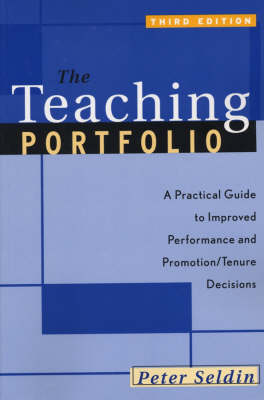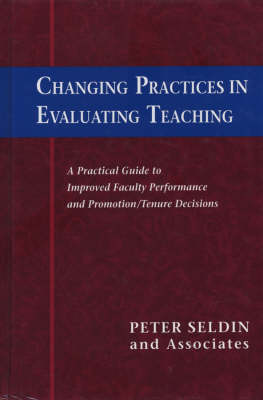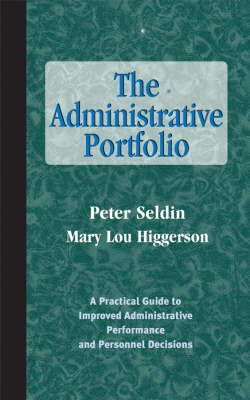JB-Anker
3 total works
Now organized into five parts, this edition includes new information on web based electronic teaching portfolios, descriptions of how seven colleges and universities have actually implemented portfolios, and 22 new sample teaching portfolios from an array of disciplines from accounting to theatre arts and a variety of institutions from large public universities to urban technological schools. The book also includes: an expanded list of 31 possible items that might appear in portfolios; an enhanced section on the process of self reflection; a new section on cautions to consider in preparing a portfolio; new suggestions for updating portfolios; new resources for portfolio development; new red flag warnings and benchmarks for success; and ways to differentiate between portfolios created for personnel decisions and those created for teaching improvement.
It explains how to * Gain genuine faculty and administrative support * Avoid common weaknesses in teaching evaluation by students, peers, and self * Evaluate teaching by examining student learning * Successfully combine disparate sources of data * Establish a climate conducive to evaluation * How to structure and use classroom visits, rating forms, electronic classroom assessment, and teaching portfolios Changing Practices in Evaluating Teaching makes evident the compelling reasons why colleges and universities must institute fair teaching evaluation systems, and explains how to do so. With a notable focus on improving student learning, this book offers readers the kind of research-based and ready-to-use information required to foster truly effective and equitable teaching evaluation at their institutions.
Academic administrators occupy a position that is highly complex and entails unrelenting demands such as managing heightened workloads, stretching ever-tightening budgets, and promoting collegiality among intensely driven individuals. At the same time, administrators are facing increased accountability for their job performances. While confronted by these challenges, how can they...
Read moreAcademic administrators occupy a position that is highly complex and entails unrelenting demands such as managing heightened workloads, stretching ever-tightening budgets, and promoting collegiality among intensely driven individuals. At the same time, administrators are facing increased accountability for their job performances. While confronted by these challenges, how can they supply concrete evidence of their accomplishments? The authors of this practical guide recommend preparing an administrative portfolio.
Including ready-to-use and field-tested information, The Administrative Portfolio is a hands-on look at the why, what, and how of preparing and successfully using the portfolio. It includes
- Practical suggestions for getting started and then maintaining the most effective use of portfolios
- Key issues, red-flag warnings, and benchmarks for success
- Helpful answers to common questions
- Differentiation between portfolios for personnel decisions and those that are used for performance improvement
- A list of 21 possible portfolio items from which administrators can choose the ones most personally relevant
- A selection of 13 real portfolios from across administration positions and institutions
Written for presidents, provosts, academic vice presidents, deans, department chairs, and program directors, The Administrative Portfolio presents as well as demonstrates sensible strategies for how to develop and use a strong portfolio.


